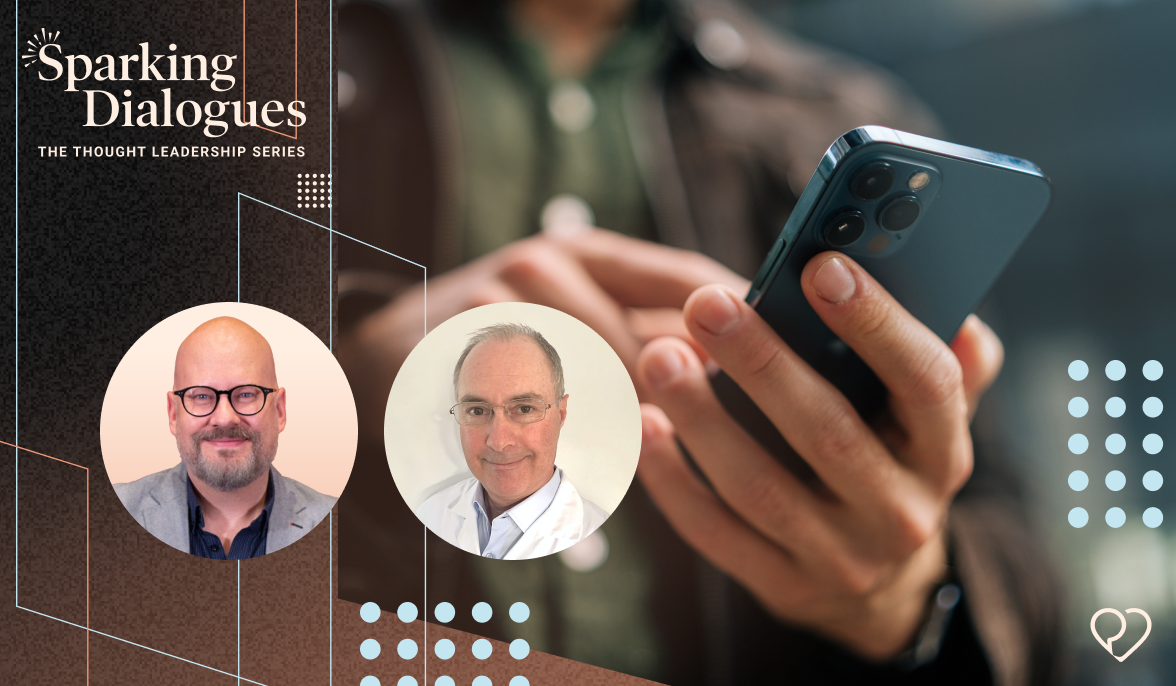What happens when 100+ HR leaders end up in one room? We get answers to some of today’s most pressing questions.
The 2025 edition of Sparking Dialogues: The employee wellness conference was one for the books. For the first time ever, attendees joined us in person for one-on-one time with their peers and front row seats to unscripted conversations.
We’re still buzzing from the energy (and maybe the coffee). But more than anything, we’re reflecting on the learnings that stayed with us.
If you couldn’t make it this year, here are four lessons worth catching up on.
The biggest barriers to women’s health are clear: knowledge gaps and demonstrating impact.
As Deloitte’s Andrea Leger shared, even women themselves often don’t realize how certain life stages can shape their career paths. She explained that education at all levels of seniority, for both men and women, is critical. It’s about identifying when and how to offer support, so women can stay and thrive in the workplace.
Dialogue’s Dr. Stephanie Moynihan echoed that sentiment, noting that women’s health is a long-term investment. The results aren’t always immediate or easy to measure, but that doesn’t make them any less valuable.
Dialogue’s Head of Women’s Health, Swati Matta, offered an analogy that resonated: the adoption of women’s health in the workplace mirrors the path mental health support took a decade ago. Employers stepped in to fill gaps in care, and over time, the business case became clear. “What may start as a cost is actually going to become a differentiator,” adds Dr. Moynihan.

Strong cultures make employees feel welcome, known, included, supported, and connected.
These five pillars (feeling welcome, known, included, supported, and connected) are part of what helped Achievers earn recognition as a 2025 Healthiest Workplace Award winner. For Kristy Jones, Vice-President of Employee Success, this focus marked a pivotal shift in strengthening employees’ sense of belonging and cracking the code to what drives belonging at work.
“We’ve determined that there are five pillars, and if you touch on even one of them, you will have increased productivity, increased engagement, and, of course, increased sense of belonging.” Here’s what they look like in action:
- Feeling welcome: Create an inviting environment in every meeting, event, and workplace experience.
- Feeling known: Acknowledge each employee’s skills, contributions, and preferred ways to receive recognition and feedback.
- Feeling included: Ensure every voice has a seat at the table. Encourage participation in meetings, invite feedback, and actively incorporate diverse perspectives into decision-making.
- Feeling supported: Empower managers to provide guidance, coaching, and the right type of feedback for each individual.
- Feeling connected: Cultivate meaningful relationships in and across teams. Identify moments to check in and build rapport beyond day-to-day tasks.

AI with a human touch is changing the game for busy talent and culture teams.
Empathy, judgment, and a dose of caution are key for organizations eager to tap into the power of AI. From chatbots answering quick questions to tools that screen resumes or simplify workflows, AI can unburden overwhelmed HR teams. But it can’t replace people, and it definitely doesn’t have all the answers.
For CGI’s Darren Steeves, AI is an opportunity—not a threat. He sees it as a way to help people repurpose their time toward higher-value work. Dentalcorp’s Julie Arsenault shares a great example: while AI can identify skills on a resume, it can’t tell you if a candidate is a good culture fit or if you would enjoy spending time with them.
MPAC is bringing AI to life in the workplace, says Lana Chaim. They’ve launched an initiative inviting employees to reimagine their work through AI and pitching their ideas—from organizational improvements to day-to-day tasks. Through the process, “employees really valued and embraced AI because they had to research and understand what’s truly involved.” Today, three of these innovative ideas are being implemented, showing how hands-on collaboration can drive transformation.

Inaction on well-being comes with a hefty price tag.
Monika Mielnik from CPP Investments recognizes that reactive care is necessary. But without also investing in a proactive approach, organizations risk three critical pitfalls: stalled innovation, reputational erosion, and equity gaps that continue to widen. “Inaction itself is a decision. Every dollar we don’t invest shows up later in the form of challenges and the need for more reactive measures.”
Darren Steeves from CGI already sees proactive and personalized solutions taking root, and he believes the future lies in predictive technology that spots potential employee needs before they become issues. (For example, Dialogue’s Well-Being Score highlights areas where a member’s well-being may be at risk and guides them to the right resources.) Darren’s advice? Adopt a stepped care model: meeting employees where they are and matching support to the right level of need.

What's next?
The conversations at Sparking Dialogues 2025 remind us that the future of HR and employee well-being isn’t about one-size-fits-all solutions. It’s about curiosity, creativity, and action.
If these insights sparked new ideas for your team, imagine what the next conversation could unlock. Subscribe to our monthly newsletter to stay ahead of emerging trends, gain exclusive insights, and be the first to know about upcoming events.




 Canada (EN)
Canada (EN)
 Global (EN)
Global (EN)








